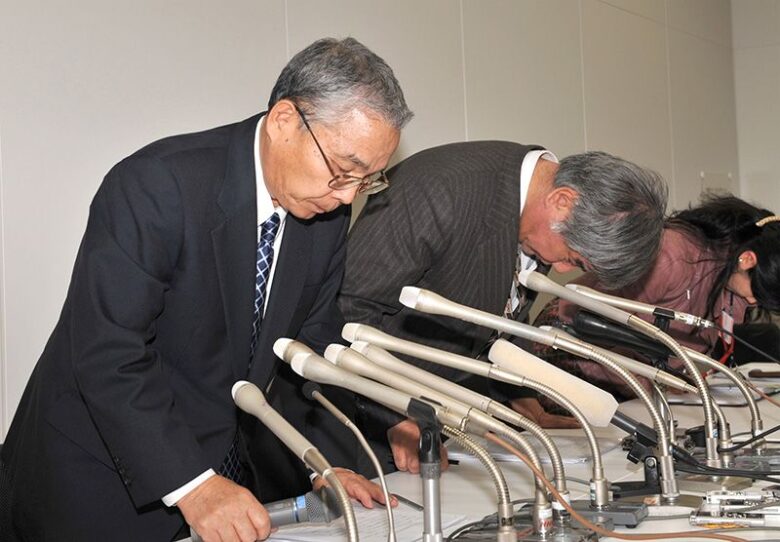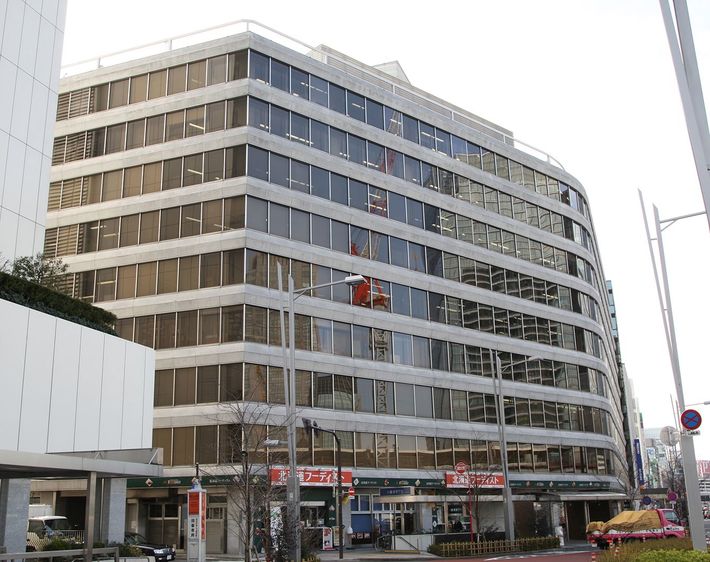Why did Japan’s manufacturing industry decline? Yukio Noguchi, professor emeritus at Hitotsubashi University, explains, “There was a problem with the government’s subsidy policy. The semiconductor industry used to be strong, but it lost its competitiveness because the government made it “subsidy-soaked.
- The government’s “subsidy-soaked” policy has caused the semiconductor industry to lose its competitiveness.
- Government intervention in the manufacturing industry began in the 1990s.
- ■ Elpida Memory, which went bankrupt with the largest total debt in history.
- Japan Display was heavily subsidized…
- ■ Government restructuring policies will not achieve fundamental change.
- ■The problems facing the Japanese economy cannot be addressed by monetary policy.
The government’s “subsidy-soaked” policy has caused the semiconductor industry to lose its competitiveness.

Government intervention in the manufacturing industry began in the 1990s.
In the 1960s, the Ministry of International Trade and Industry (MITI) attempted to reorganize Japanese industry in preparation for the liberalization of foreign investment, and prepared the “Tokushin Hou” (Temporary Measures Law for the Promotion of Specific Industries). However, Japanese industry at the time dismissed this as “control that infringes on economic freedom. They considered it more important to avoid government intervention than to prevent foreign takeovers.
At the time, the government’s protection measures were targeted at agriculture, which had been left behind by the rapid economic growth. However, this situation began to change in the mid-1990s. The government began to intervene to rescue manufacturing industries that had lost their competitiveness.
First, the government implemented monetary easing in the form of macroeconomic policy, leading to a weakening of the yen. In addition, the Ministry of Economy, Trade, and Industry (METI) has been guiding industrial restructuring (in reality, subsidizing and bailing out manufacturing industries that have lost their competitiveness). Then, around 2000, the target of protection and bailout by the government changed from agriculture to manufacturing. In response to the major shift in the global economy, the government tried to prolong the life of the traditional type of manufacturing industry rather than to change the industrial structure.
Especially after the 2008 Lehman Shock (a financial crisis triggered by the failure of the U.S. investment bank Lehman Brothers in September 2008), a variety of measures were taken to rescue the manufacturing industry. These included employment adjustment subsidies, tax breaks and subsidies for eco-friendly cars, and subsidies for the production of TV receivers due to the transition to terrestrial digital broadcasting.
Strong government interference delayed the adjustment of industrial structure, as exemplified by Elpida Memory’s DRAM (semiconductor storage devices) and Renesas Electronics’ LSI (large-scale integrated circuits). These companies were established at the initiative of the government to reorganize the industry, but not only did they fail, they were also corrupt. Huge subsidies were also spent on the construction of huge factories by Sharp and Panasonic. Thus, private companies have become increasingly dependent on the government.
This is a reflection of the decline of Japan’s manufacturing industry. The growth strategy of Shinzo Abe’s cabinet was another attempt by the government to intervene in private economic activity with the aim of prolonging the life of the traditional industrial structure centered on the manufacturing sector.
■ Elpida Memory, which went bankrupt with the largest total debt in history.
To date, a significant amount of corporate restructuring in Japan has been led by the government. In 2003, the Ministry of Economy, Trade, and Industry (METI) led the creation of the Industrial Revitalization Corporation of Japan (IRCJ) as a government fund for the purpose of bailing out companies. In 2004, it was involved in the restructuring of Kanebo and Daiei. Furthermore, in 2009, the Innovation Network Corporation of Japan was established. The idea was to bring about innovation by bringing together promising companies and overlapping businesses.
As for the semiconductor industry, Elpida Memory, Inc. was established in 1999 by integrating the DRAM businesses of NEC and Hitachi (it later took over the DRAM business of Mitsubishi Electric Corporation). However, the company ran into financial difficulties and became the first company to be subject to the revised Act on Special Measures for Industrial Revitalization and Industrial Innovation, and received a 30 billion yen investment in the company through public funds. Nevertheless, the situation did not improve, and in February 2012, the company filed for protection under the Corporate Reorganization Law and went bankrupt with 448 billion yen in total debt, the largest ever incurred by a manufacturing company.
Japan’s semiconductor industry was weakened not because of a lack of subsidies. It was because it was heavily subsidized. As long as the basic idea is “subsidize and help the companies,” Japan’s semiconductor industry will never revive.
Japan Display was heavily subsidized…
Japan Display Inc. (JDI) was formed in 2012 by combining the LCD screen businesses of Sony, Toshiba, and Hitachi. The Innovation Network Corporation of Japan (INCJ) invested 200 billion yen in the company, which was launched as a national revitalization project. However, in 2019, the company entered a state of crisis.
Innovation Network Corporation of Japan invested 200 billion yen at the time of its establishment, and an additional 75 billion yen was invested between 2016 and 2017. Although there was criticism for continuing to inject government money into a loss-making private company, 107 billion yen was provided in 2017 and another 20 billion yen in 2018. However, on December 10, 2018, all directors from the private sector of the Innovation Network Corporation of Japan resigned. Innovation Network Corporation ceased to function.
Japan Display’s financial situation remained difficult. At one point, the company fell into insolvency. There was also a case of accounting fraud; in October 2020, the company sold its factory in Hakusan, Ishikawa Prefecture, to Sharp and Apple in an effort to stabilize its operations, but it still continues to lose money. LCDs, along with semiconductors, had been a symbol of the strength of Japanese manufacturing and were considered a house specialty technology. It has come to this state. What is needed is to respond to the structural changes in the global manufacturing industry.
It is not a matter of integrating the businesses of several companies to eliminate duplication. Elpida Memory and Japan Display did not succeed because the basic structure of the global manufacturing industry has changed.
■ Government restructuring policies will not achieve fundamental change.
Major reforms can only proceed through corporate renewal, not corporate restructuring. However, restructuring led by government agencies and decided through consultation with the companies and financial institutions involved is aimed at maintaining the traditional Japanese business model and industrial structure. Therefore, drastic change cannot be realized.
This system of public-private cooperation has prevented the transformation of Japan’s industrial structure. As a result, the basic structure of Japan’s industrial structure and corporate business models have remained largely unchanged. In Japan, reforms that involve the disappearance of companies have been considered undesirable. The main reason for this is to secure employment.
However, even if companies remain and continue to maintain employment, the overall employment situation has changed drastically. Non-regular employment now accounts for as much as 40% of total employment. The only answer is for new industries to grow and create employment opportunities.
The original cause of the slump in the semiconductor and LCD businesses was the decline in the ability of Japanese manufacturers to develop new products and produce competitive products. In the case of Elpida Memory, DRAM has always been a low value-added product. Japan Display’s sales had been growing along with the growth of iPhone shipments until 2016.
After 2016, however, iPhones began to use OLED for their panels. However, JDI was completely unprepared for OLED. As a result of these factors, sales declined sharply after peaking in 2016.
■The problems facing the Japanese economy cannot be addressed by monetary policy.
In the case of semiconductors, the inability of management to make decisions on large-scale investments is said to be the cause of the subsequent slump. In the case of LCDs, however, they made large-scale investments. In the case of Sharp, in particular, the company developed a vertically integrated model (i.e., everything from the production of LCD panels to the assembly of LCD TVs is done in the same factory), known as the “Kameyama Model of the world.
However, the company eventually went bankrupt and was forced to become a subsidiary of Taiwan’s Hon Hai. The company claimed to protect its LCD technology through strict information management, but in hindsight, LCDs were nothing more than a commodity (a common product that cannot be differentiated by quality and must therefore be competed against on price).
What had a major impact on the Japanese economy was the structural change in the global economy. These changes were brought about by the development of information and communications technology (IT) and the industrialization of emerging economies, and they occurred on the supply side. Therefore, this is a problem that cannot be addressed by monetary policy.
Monetary easing will weaken the yen. And while the yen is weakening, corporate profits will increase and stock prices will rise. However, this is only a temporary phenomenon. Nevertheless, the goal of monetary easing has been to weaken the yen and thereby “end deflation.” Since 1993, there have been intermittent interventions to sell the yen and buy dollars, which led to subsequent quantitative monetary easing and large-scale foreign exchange intervention.
The Japanese economy has continued along this line of economic policy up to the present. Both Abenomics and the other-dimensional monetary easing are part of this policy.


コメント